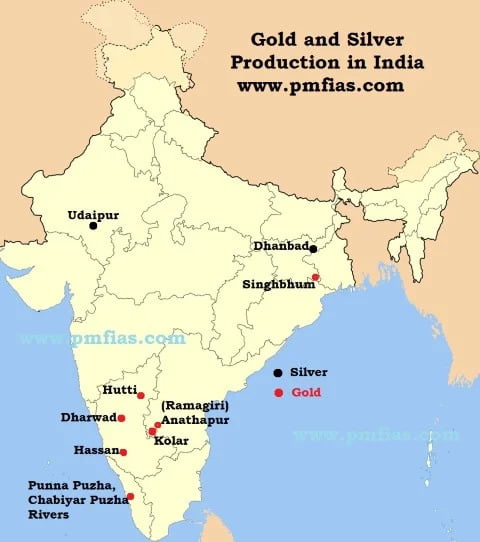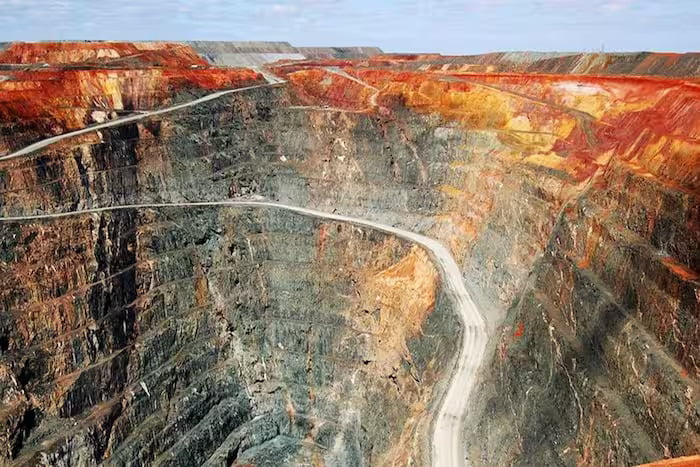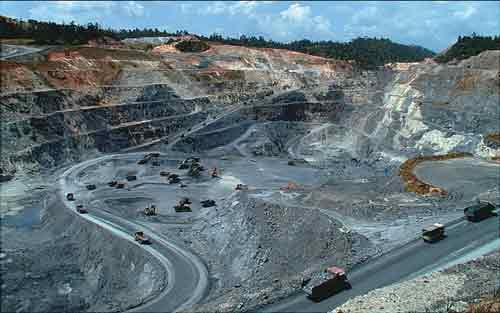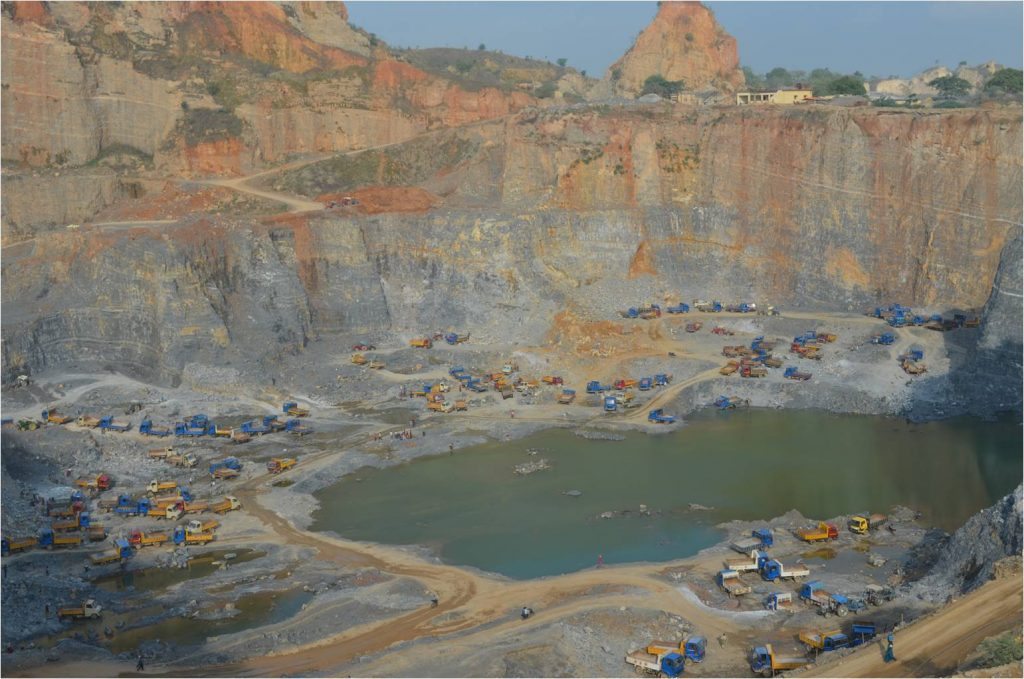India, known for its rich cultural heritage and diverse geography, has also been a land of natural resources. Among these, gold holds a significant place, not just for its economic value but also for its cultural and religious importance. “Major gold mines in India, such as the Hutti Gold Mines in Karnataka and the newly discovered Sonbhadra gold mines in Uttar Pradesh, play a significant role in the country’s gold production. Dive into India’s golden story! This blog explores the history, production, and economic impact of the country’s major gold mines.

1. Kolar Gold Fields (KGF), Karnataka
Kolar Gold Fields (KGF), located in the Kolar district of Karnataka, is one of the oldest and most renowned gold mining areas in India. The history of gold mining at KGF dates back to ancient times, with mining activities documented as early as the second century AD. However, it was during the British colonial period in the late 19th century that modern mining techniques were introduced, leading to large-scale gold extraction.
Key Facts:
- Depth and Production: KGF was once the second deepest gold mine in the world, reaching depths of over 3 kilometers. It was known for its significant gold production during its peak years.
- Economic Impact: The mines contributed substantially to the economy and provided employment to thousands of workers, fostering the growth of the surrounding town and infrastructure.
- Closure: Despite its historical importance, KGF was closed in 2001 due to high production costs, low gold yields, and the depletion of easily accessible gold reserves. The closure marked the end of an era for one of India’s most iconic mining sites.
- Cultural Legacy: KGF holds a special place in Indian history and culture, symbolizing the nation’s rich mining heritage. It has been the subject of various books, documentaries, and even movies, preserving its legacy for future generations.

2. Hutti Gold Mines, Karnataka
Hutti Gold Mines, located in the Raichur district of Karnataka, is the only active gold mining operation in India. With a history that stretches back to ancient times, Hutti has become a significant contributor to India’s gold production.
Key Facts:
- Operator: The mines are operated by Hutti Gold Mines Company Limited (HGML), a government-owned enterprise.
- Annual Production: Hutti Gold Mines produces around 3 tonnes of gold annually, making it a major player in India’s gold mining industry.
- History: Gold mining at Hutti dates back to ancient times, with references in historical texts. Modern mining began in the early 20th century. Hutti Gold Mines has a rich history and continues to contribute to India’s gold production.
- Technology: HGML employs modern mining techniques and sustainable practices, including the use of advanced machinery and technology to increase efficiency and reduce environmental impact.
- Economic Impact: Local jobs and economic boost: the mines are a regional lifeline.
- Mining Activity: Hutti Mine is the main underground gold mine of HGML. It features nine parallel gold-bearing reefs exposed on the surface. Active mining occurs in six lodes over a strike length of around 1.3 km. The parallel lodes have a general strike of NNW-SSE and dips ranging from 60° to 70° due west.

3. Bharat Gold Mines Limited (BGML), Karnataka
Bharat Gold Mines Limited (BGML) was a premier mining company based in Karnataka, with its operations centered around the Kolar Gold Fields (KGF). It played a significant role in India’s gold mining history.
Key Facts:
- Location: Primarily in the Kolar district of Karnataka.
- Establishment: It was established in 1972 and is the only company in India that mines gold.
- Operations: BGML operated the famous Kolar Gold Fields, including the Champion Reef Mine, one of the deepest gold mines in the world.
- Ownership and Control: BGML is a public sector undertaking (PSU) of the Government of India, controlled by the Ministry of Mines
- Historical Significance: Inheriting Kolar’s age-old gold tradition, BGML, founded by the British, kept the mines humming.
- Challenges: Despite its storied past, BGML faced high production costs and dwindling gold reserves. These challenges led to the eventual closure of its operations in 2001.
- Legacy: BGML’s legacy extends beyond gold. They mined heavily, but also advanced mining tech and trained generations of Indian miners.

4. Sonbhadra Mines, Uttar Pradesh
The Sonbhadra district in Uttar Pradesh has recently gained attention for its potential gold reserves, marking it as a promising area for future gold mining in India.
Key Facts:
- Location: The gold deposits are primarily found in the Son Pahadi and Hardi areas of Sonbhadra district, Uttar Pradesh, situated in the southeastern part of the state.
- Discovery: Significant gold reserves were reported in Sonbhadra in recent years, sparking interest in the region’s mining potential, an estimated 3,000 tonnes of gold reserves were reportedly discovered. The deposits are almost five times India’s present gold reserves
- Significance: This discovery could potentially make India the second-largest holder of gold reserves globally, trailing only the United States.
- Estimates: Preliminary surveys and estimates suggested substantial deposits of gold, potentially making Sonbhadra a new hub for gold mining in India.
- Efforts: Geologists began searching for gold reserves in Sonbhadra almost two decades ago, and the area where the gold was found covers approximately 108 hectares
- Prospects: The exploration and mining activities are still in the initial stages, with further geological surveys and feasibility studies required to confirm the exact quantities and viability of mining operations.
- Economic Potential: If proven viable, the development of gold mines in Sonbhadra could significantly boost the local economy, create jobs, and contribute to India’s overall gold production.

5. Ramgiri Gold Field, Andhra Pradesh
Ramgiri Gold Field, located in the Anantapur district of Andhra Pradesh, is one of the lesser-known gold mining regions in India with historical significance and potential for future exploration.
Key Facts:
- Location: Situated in the Anantapur district of Andhra Pradesh, in the southeastern part of India.
- Historical Significance: Ramgiri’s gold story stretches back centuries, with whispers of its riches echoing in history and local legends. The RGF witnessed intensive underground mining, with several rich gold veins. Between 1910 and 1927, three main mining ventures produced approximately 176,338 ounces of gold at a recovered grade of around 15 g/t.
- Geological Features: Ramgiri is known for its gold-bearing quartz veins, and geological signs hint at hidden gold reserves.
- Exploration: Surveys have been conducted to assess the gold potential of Ramgiri, although modern exploration has been limited.
- Potential: The undeveloped Ramgiri Gold Field offers a chance for future exploration and mining, boosting both the local economy and India’s gold output.
- Resource Estimates: The Geological Survey of India (GSI) reported gold resources in the RGF, including 590,000 tonnes of ore at an average grade of 3.7 g/t and an inferred resource of 3.96 million tonnes of ore with varying grades (1.32 g/t to 5.6 g/t). Recent exploration has identified new targets in the southern and western parts of the belt.
6. Bhukia Gold Mines, Rajasthan
Rajasthan’s Bhukia Gold Mines in Banswara district holds promise for India’s gold future, with exploration hinting at sizeable reserves.
Key Facts:
- Location: Situated in the Banswara district of Rajasthan, in the northwestern part of India.
- Discovery: Promising gold finds have drawn interest to the region, with early exploration suggesting substantial gold reserves.
- Exploration Efforts: Years of exploration efforts in India have utilized drilling and sampling to map the gold deposits’ size and value.
- Geological Features: The Bhukia region is characterized by its mineral-rich geological formations, which include auriferous (gold-bearing) zones.
- Potential: Bhukia’s gold reserves, if tapped, could transform it into a top Indian producer, raising national output and fueling local growth.
India’s gold mining history is a blend of ancient heritage and modern advancements. From famed Kolar to active Hutti mines, India’s gold story weaves a path from its rich past to a future gleaming with potential. The recent discoveries in Sonbhadra indicate that the country still has much to offer in terms of gold resources. With India’s focus on resource potential, gold mining’s role in the nation’s economic and cultural identity is certain to endure.
Read Also
- Languages and Dialects of Madhya Pradesh
- India’s UNESCO World Heritage Sites
- Co-operative Dairies in India
- PAN 2.0: Revolutionizing India’s Tax System
- Indian States Zones
- States and Capitals of India – 2024
- Major Stadiums in India
- National Identity Card India
- Foundation Day of States in India
- Important Mountain Passes in India
Frequently Asked Questions (FAQs)
Kolar Gold Fields (KGF) in Karnataka
Hutti Gold Mines in Karnataka
Bharat Gold Mines Limited (BGML) in Karnataka
Sonbhadra Mines in Uttar Pradesh
Ramgiri Gold Field in Andhra Pradesh
Bhukia Gold Mines in Rajasthan
The major gold mines in India include the Hutti Gold Mines in Karnataka, the Kolar Gold Fields (now closed), and the newly discovered Sonbhadra gold mines in Uttar Pradesh.
Kolar Gold Fields (KGF) is one of the oldest and most renowned gold mines in India, with mining activities dating back to the second century AD. It was one of the world’s deepest mines and significantly contributed to gold production before its closure in 2001.
The only active gold mine in India is the Hutti Gold Mines, located in the Raichur district of Karnataka. The Hutti Gold Mines Company Limited (HGML) operates the Ramgiri Gold Field, producing roughly 3 tonnes of gold each year.
India’s gold production is relatively low compared to its consumption. The country produces around 1.6 tonnes of gold annually, with most of it coming from the Hutti Gold Mines.
Gold mines in India face challenges such as depleting reserves, high operational costs, and environmental concerns. Additionally, illegal mining and regulatory hurdles can also impact gold production.
Gold mining can significantly impact the local economy by providing employment opportunities, boosting local businesses, and contributing to infrastructure development. However, it can also lead to environmental degradation if not managed properly.






I don’t think the title of your article matches the content lol. Just kidding, mainly because I had some doubts after reading the article.